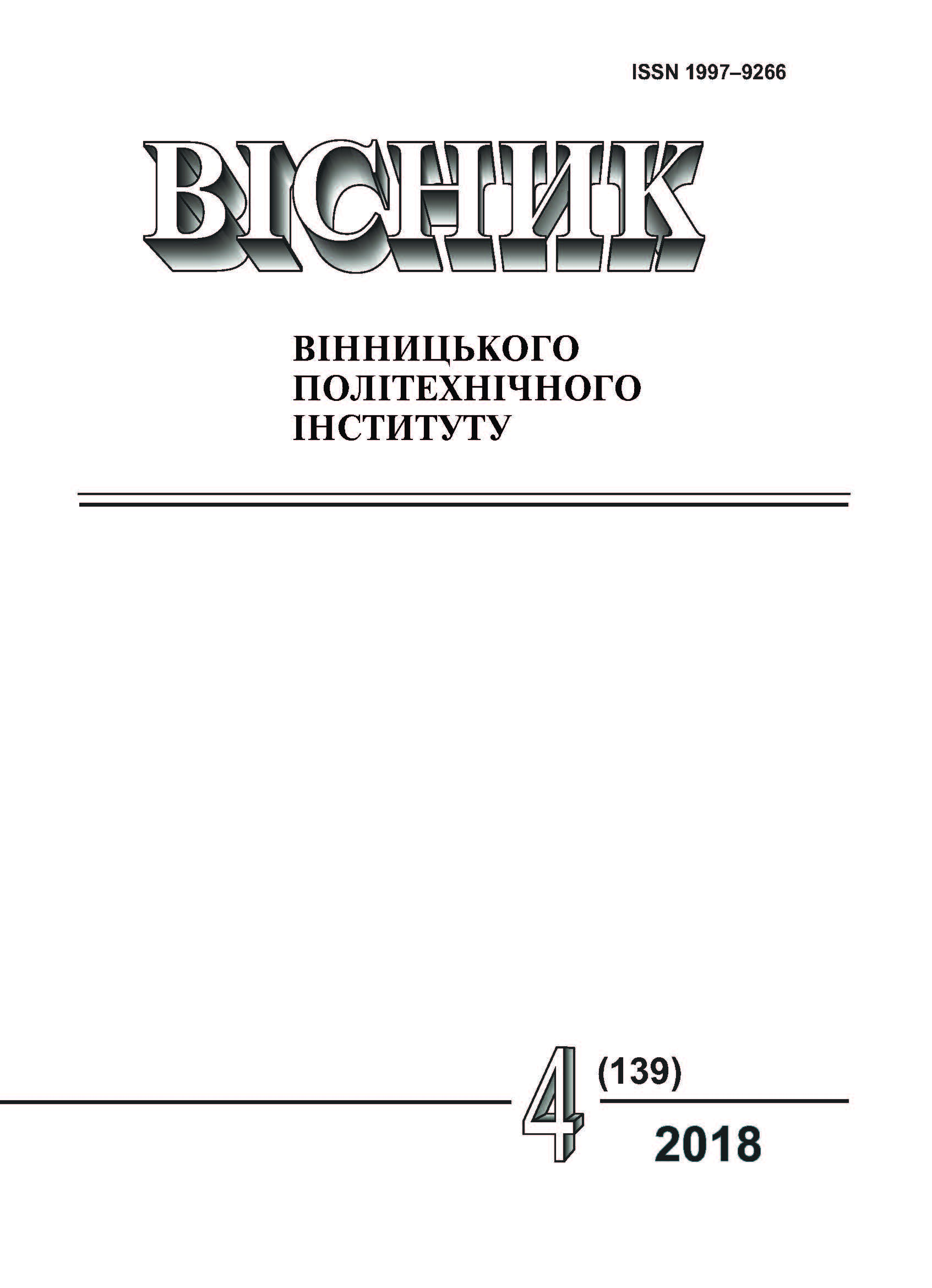The Removal of Cu(II) by Composite Zeolite-humate Sorbent in the Presence of Extraneous Electrolytes
Keywords:
composite sorbent, zeolite, humic acids, heavy metals, sorption, extraneous electrolytes, hardness saltsAbstract
In thermal power engineering, the issue of removal of heavy metal ions from circulating water, which was formed as a result of corrosion of equipment made of non-ferrous metals, is very acute. The presence of other electrolytes, especially the hardness salts, significantly affects the degree of heavy metal ions removal in processes where the main mechanism is ion exchange. With a significant excess of calcium salts, it is practically impossible to achieve a noticeable reduction of copper ions content using cation exchange resins. One of the alternative methods for solving this problem is the synthesis of a composite sorbent on the basis of existing porous natural carriers, by treating it with a modifier in order to obtain a surface that has a high affinity for the pollutants. Zeolite is a natural alumosilicate mineral that has ion-exchange properties and is widely used as a sorbent for metals. Raw zeolite has relatively low sorption capacity to heavy metal ions though it can be improved via impregnation by hymic acids solution followed by their intraparticle precipitation. Humic acids themselves can bind metal ions in complexes but their application in pure form is not practical as they are in colloid form. Sorption properties of a composite sorbent based on zeolite and humic acids with respect to Cu(II) at sorption from monocomponent model solutions and in the presence of Na+, Ca2+, Fe3+ as extraneous cations were studied. The presence of sodium salts had little effect on the residual copper concentration. In the presence of calcium and iron salts, the sorption of copper was depressed considerably. The composite sorbent had higher specific sorption capacity and made it possible to achieve lower residual copper concentrations compared to unmodified zeolite. The values of the Cu (II) distribution coefficient between the liquid and solid phases in solutions of different salt composition were calculated. It was 1,5…2 times higher for composite sorbent than for non-treated zeolyte. The relationship between the value of the distribution coefficient and the concentration of the extraneous electrolyte in logarithmic coordinates is linear.
References
О. М. Боженко, Ю. А. Омельчук та М. Д. Гомеля, «Отримання високоселективних сорбентів для вилучення міді із вод систем охолодження АЕС,» Збірник наукових праць СНУЯЕтаП, вип. 4 (32), с. 148-154, 2009.
L. Charerntanyarak, "Heavy metals removal by chemical coagulation and precipitation," Water Science and Technology, vol. 39, issue 10-11, p. 135-138, 1999. doi: 10.1016/S0273-1223(99)00304-2.
C. K. Ahn, D. Park, S. H. Woo and J. M. Park, "Removal of cationic heavy metal from aqueous solution by activated carbon impregnated with anionic surfactants," Journal of Hazardous Materials, vol. 164, issue 2-3, p. 1130-1136. 2009. doi: 10.1016/j.jhazmat.2008.09.036.
S. Iijima, "Helical microtubules of graphitic carbon," Nature, vol. 354, issue 6348, p. 56-58, 1991. doi: 10.1038/354056a0.
Ю. В. Топкин, И. Г. Рода, Н. В. Афиногенов и Н. Н. Прищеп, «Удаление ионов тяжелых металлов из растворов ферритным методом,» Химия и технология воды, № 10, c. 895-897, 1990.
B. Alyüz and S. Veli, "Kinetics and equilibrium studies for the removal of nickel and zinc from aqueous solutions by ion exchange resins," Journal of Hazardous Materials, vol. 167, issue 1-3, p. 482-488, 2009. doi: 10.1016/j.jhazmat.2009.01.006.
M. K. Doula, "Simultaneous removal of Cu, Mn and Zn from drinking water with the use of clinoptilolite and its Fe-modified form," Water Research, vol. 43, issue 15, p. 3659-3672, 2009. doi: 10.1016/j.watres.2009.05.037.
В. П. Малін, В. М. Галімова та М. Д. Гомеля «Оцінка ефективності катіоніту КУ-2-8 при вилученні йонів міді з води в присутності йонів жорсткості,» Вода і водоочисні технології. Науково-технічні вісті, № 2(19), c. 10-18, 2016.
А. А. Юрищева, и др., «Нанокомпозиционный сорбент для очистки природных сред и его экотоксикологическая оценка,» Экология и промышленность России, № 9, c. 50-53, 2011.
О. П. Хохотва, О. І. Кондратенко, та К. О. Шкель, «Використання композиційного сорбенту цеоліт-гумінові кислоти для вилучення іонів міді з водних розчинів,» Вісник НТУ «ХПІ», Серія: Нові рішення в сучасних технологіях, № 18 (1190), c. 180-185, 2016. doi: 10.20998/2413-4295.2016.18.27.
Б. П. Никольский, ред., Справочник химика, том 1. М.-Л.: Химия, 1962, 1071 с.
Downloads
-
PDF (Українська)
Downloads: 121
Published
How to Cite
Issue
Section
License
Authors who publish with this journal agree to the following terms:
- Authors retain copyright and grant the journal right of first publication.
- Authors are able to enter into separate, additional contractual arrangements for the non-exclusive distribution of the journal's published version of the work (e.g., post it to an institutional repository or publish it in a book), with an acknowledgment of its initial publication in this journal.
- Authors are permitted and encouraged to post their work online (e.g., in institutional repositories or on their website) prior to and during the submission process, as it can lead to productive exchanges, as well as earlier and greater citation of published work (See The Effect of Open Access).





